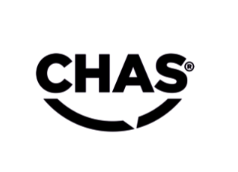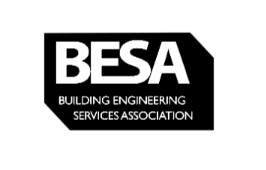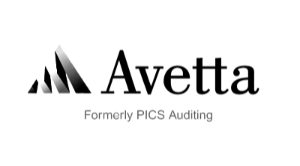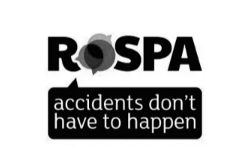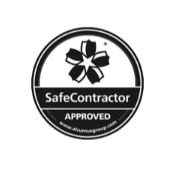phs Group has acquired Citron Hygiene UK find out more here
Despite the UK's stringent health and safety regulations making our workplaces some of the safest in Europe, accidents can and do still happen. Immediate, basic first aid can make all the difference when someone is injured on the job.
According to the Health and Safety Executive (HSE), there were 123 fatal injuries to workers in the UK during 2021/22. While this number has decreased compared to previous years, even a single accident is one too many. That's why it's so important not only to meet workplace safety obligations but also to ensure your first aid box contents are up-to-date and easily accessible.
Understanding First Aid Regulations
The Health and Safety (First-Aid) Regulations 1981 require employers to provide adequate and appropriate first aid equipment, facilities, and trained personnel. This means having the right first aid supplies to meet the specific needs of your workplace, ensuring you're fulfilling legal obligations and offering tailored solutions.
While you're not legally required to provide first aid materials for customers or visitors, the HSE strongly recommends including them in your first-aid needs assessment. After all, accidents can happen to anyone on your premises.
Why Is a First Aid Kit Essential?
A first aid kit is more than just a box on a shelf; it's a vital collection of supplies designed to provide immediate care for minor injuries and illnesses. Whether you're at work, school, or home, having a well-stocked first aid box can make a significant difference in handling emergencies effectively.
The first aid box contents can vary depending on the specific needs of your environment, but there are some universal items every kit should include. By understanding what should be in your first aid box, you're better prepared to provide prompt and effective care when it's needed most.
Where Can I Find the First Aid Box?
You might be surprised to learn that five out of six employees don't know where their workplace first aid kits are located. Even with signs and posters pointing them out, many people remain unaware.
To fix this, make sure that during employee orientation you:
-
Point out the nearest first aid box.
-
Introduce the designated first aiders.
-
Explain what to do in case of an emergency.
Your first aid box should be:
-
Easy to access: Place it somewhere visible and reachable.
-
Properly stored: Keep it in a cool, dry place away from direct sunlight.
-
Secure: Ensure it's out of reach of children if they might be on the premises.
Some first aiders also keep a small pack of essential first aid box items handy, such as:
-
A CPR face shield
-
A triangular bandage
-
A medium dressing
-
Protective gloves
Having these items on hand allows for a quick response while someone retrieves the full first aid kit. It's also a good idea to keep a basic first aid kit in company vehicles.
What Should Be in a First Aid Box?
Knowing what's inside your first aid box is just as important as knowing where it is. Employers must ensure that the first aid box contents are:
-
Fully stocked
-
In-date
-
Suitable for the specific risks of the workplace
Recommended First Aid Kit Contents:
-
First aid guidance leaflet: Basic instructions on how to use the contents.
-
Accident report book: For recording incidents and actions taken.
-
Sterile dressings (various sizes): To cover wounds.
-
Triangular bandages: For slings and support.
-
Safety pins: To secure bandages.
-
Sterile eye pads: For eye injuries.
-
Assorted plasters: For minor cuts and grazes.
-
Alcohol-free sterile wipes: To clean wounds.
-
Adhesive tape: To secure dressings.
-
Disposable gloves: To protect both the first aider and the injured person.
-
CPR face shield: For safe resuscitation.
-
Scissors: To cut dressings or clothing.
-
Disposable apron: To prevent contamination.
Dealing with Wounds and Bleeding
Cuts and bleeding injuries are common and need immediate attention. A well-prepared first aid box should include supplies to clean and protect wounds, helping prevent infection and promote healing. Essential items for wound care include:
-
Sterile gauze pads and rolls: For covering wounds.
-
Medical tape: To secure dressings.
-
Bandages and band-aids: For minor cuts.
-
Antiseptic wipes: To clean wounds and reduce infection risk.
-
Antibiotic ointment: To prevent bacterial infections.
Having these supplies ready means you can address bleeding injuries promptly. It's also important to know how to properly clean and dress wounds to ensure the best outcome.
Managing Pain and Blisters
Pain and discomfort can make even minor injuries feel much worse. Your first aid box items should include supplies to help alleviate pain and manage blisters, such as:
-
Pain relievers: Paracetamol or ibuprofen to reduce pain and inflammation.
-
Antihistamines: For allergic reactions and to reduce itching.
-
Hydrocortisone cream: For treating skin irritations.
-
Blister care supplies: Moleskin or blister pads to protect and cushion blisters.
Knowing how to use these items correctly—and understanding when to seek medical help—is key to effective first aid.
Tailoring Your Workplace First Aid Kit
Every workplace is different, so you might need to add specific items to your first aid box based on the nature of your business.
For Food Preparation Areas:
-
Blue plasters and tape: Easily visible if they fall into food.
-
Disposable gloves
For Outdoor or Machinery Work:
-
Digital thermometer
-
Skin rash cream
-
Antihistamine tablets or cream
-
Insect bite and sting relief
-
Antiseptic cream
-
Painkillers: Check company policy on administering medication.
-
Distilled water: For cleaning wounds.
Remember, the size of your organization affects how many first aid boxes you need and what they should contain. The HSE provides guidance on minimum contents based on staff numbers and workplace hazards.
It's also crucial to wear gloves and other protective gear when handling bodily fluids or waste materials to prevent the spread of infection, especially in higher-risk workplaces.
Becoming a First Aider
Having trained first aiders on site is essential. The HSE recommends at least one trained first aider per 50 employees. Regular training ensures they're ready to handle emergencies effectively.
To become a first aider:
-
Attend a certified first aid course: Various organizations offer these.
-
Renew your certification every three years: Stay current with best practices.
-
Take annual refresher courses: Keep your skills sharp.
Having multiple first aiders provides coverage during holidays, sick leave, or lunch breaks. You might also consider creating specialized first aid kits tailored to specific needs like sports or travel.
First Aid in the Post-Pandemic Workplace
The COVID-19 pandemic has changed our approach to health and safety. As people return to the workplace, it's important to:
-
Ensure first aid boxes are fully stocked: Replace any out-of-date items.
-
Include additional PPE: Face masks, hand sanitizers, and gloves.
-
Update employees on any changes: New procedures or locations of first aid boxes.
-
Reassess your risk assessment: Account for any new hazards.
Essential Tips for Managing First Aid at Work
-
Keep Your Risk Assessment Up to Date: Regularly review and identify potential hazards.
-
Ensure Adequate First Aid Provision: Have enough first aid boxes and trained personnel.
-
Regularly Check First Aid Box Contents: Restock items and replace expired products.
-
Communicate First Aid Information: Use signs, posters, and digital channels.
-
Maintain Trained First Aiders Onsite: Especially important in hybrid work environments.
First Aid Kit Checklist
A first aid kit checklist helps ensure your first aid box is always ready. Regularly reviewing and replenishing your first aid box items means you're prepared for any emergency. Here's a basic list:
-
Bandages and band-aids
-
Gauze pads and rolls
-
Medical tape
-
Scissors
-
Tweezers
-
Thermometer
-
First aid manual
-
Antiseptic wipes
-
Antibiotic ointment
-
Pain relievers
-
Antihistamines
-
Hydrocortisone cream
-
Blister care supplies
-
Disposable gloves
-
Individually wrapped first aid items
-
Support bandages for joints
Regularly check and restock your first aid kit. Properly dispose of any used supplies to keep your kit clean and effective.
First Aid Solutions with phs Group
Managing first aid supplies can be a big responsibility. That's where we come in. At phs Group, we offer services to make this easier for you.
Our Services Include:
-
Fully stocked first aid boxes: Compliant with BS 8599 standards.
-
Regular inspections and restocking: Keeping all first aid box contents in-date and available.
-
Customized solutions: Tailored to your business size and needs.
-
Bundled services: Combine first aid management with waste disposal, hygiene services, and more.
After each service visit, you'll get an email confirmation detailing what we've serviced, along with a time-stamped signature from your staff member who witnessed the replenishment.
Conclusion
A well-stocked first aid box and trained first aiders aren't just legal requirements—they're essential for a safe workplace. By staying on top of your first aid provisions, you can provide immediate help when accidents occur and show your commitment to everyone's well-being.
Ready to Make First Aid Management Easier?
Let phs Group help keep your first aid box contents up-to-date and compliant. Contact us today to discuss how we can support your workplace safety needs.





























